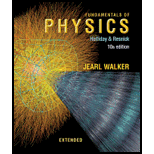
A mixture of 1773 g of water and 227 g of ice is in an initial equilibrium state at 0.000°C. The mixture is then, in a reversible process, brought to a second equilibrium state where the water–ice ratio, by mass, is 1.00:1.00 at 0.000°C. (a) Calculate the entropy change of the system during this process. (The heat of fusion for water is 333 kJ/kg.) (b) The system is then returned to the initial equilibrium state in an irreversible process (say, by using a Bunsen burner). Calculate the entropy change of the system during this process, (c) Are your answers consistent with the second law of
Want to see the full answer?
Check out a sample textbook solution
Chapter 20 Solutions
Fundamentals of Physics Extended
Additional Science Textbook Solutions
Glencoe Physical Science 2012 Student Edition (Glencoe Science) (McGraw-Hill Education)
Physics (5th Edition)
College Physics: A Strategic Approach (4th Edition)
Conceptual Physics (12th Edition)
Cosmic Perspective Fundamentals
EBK FUNDAMENTALS OF THERMODYNAMICS, ENH
- A copper rod of cross-sectional area 5.0 cm2 and length 5.0 m conducts heat from a heat reservoir at 373 K to one at 273 K. What is the time rate of change of the universe's entropy for this process?arrow_forwardIn an isochoric process, heat is added to 10 mol of monoatomic ideal gas whose temperature increases from 273 to 373 K. What is the entropy change of the gas?arrow_forwardWhich of the following is true for the entropy change of a system that undergoes a reversible, adiabatic process? (a) S 0 (b) S = 0 (c) S 0arrow_forward
- Does the entropy increase for a Carnot engine for each cycle?arrow_forwardA Carnot cycle working between 100 and 30 is used to drive a refrigerator between 10 and 30 . How much energy must the Carnot engine produce per second so that the refrigerator is able to discard 10 J of energy per second?arrow_forwardA Carnot engine operates between 550 and 20 baths and produces 300 kJ of energy in each cycle. Find the change in entropy of the (a) hot bath and (b) cold bath, in each Carnot cycle?arrow_forward
- Suppose 20 g of ice at 0 is added to 300 g of water at 60 . What is the total change in entropy of the mixture after it reaches thermal equilibrium?arrow_forwardIn a diesel engine, the fuel is ignited without a spark plug. Instead, air in a cylinder is compressed adiabatically to a temperature above the ignition temperature of the fuel; at the point of maximum compression, the fuel is injected into the cylinder. Suppose that air at 20 C is taken into the cylinder at a volume V1 and then compressed adiabatically and quasi-statically to a temperature of 600 C and a volume V2 . If =1.4 , what is the ratio V1/V2 ? (Note: static. In an operating diesel engine, the compression is not quasi-arrow_forwardWhat is the entropy change of 10 g of steam at 100 when it condenses to water at the same temperature?arrow_forward
- Consider cyclic processes completely characterized by each of the following net energy inputs and outputs. In each case, the energy transfers listed are the only ones occurring. Classify each process as (a) possible, (b) impossible according to the first law of thermodynamics, (c) impossible according to the second law of thermodynamics, or (d) impossible according to both the first and second laws. (i) Input is 5 J of work, and output is 4 J of work. (ii) Input is 5 J of work, and output is 5 J of energy transferred by heat. (iii) Input is 5 J of energy transferred by electrical transmission, and output is 6 J of work. (iv) Input is 5 J of energy transferred by heat, and output is 5 J of energy transferred by heat. (v) Input is 5 J of energy transferred by heat, and output is 5 J of work. (vi) Input is 5 J of energy transferred by heat, and output is 3 J of work plus 2 J of energy transferred by heat.arrow_forwardTwo moles of a monatomic ideal gas such as oxygen is compressed adiabatically and reversibly from a state (3 atm, 5 L) to a state with a pressure of 4 atm. (a) Find the volume and temperature of the final state. (b) Find the temperature of the initial state. (c) Find work done by the gas in the process. (d) Find the change in internal energy in the process. Assume Cv=5R and Cp=Cv+R for the diatomic ideal gas in the conditions given.arrow_forwardTrue or False: The entropy change in an adiabatic process must be zero because Q = 0.arrow_forward
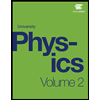
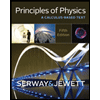 Principles of Physics: A Calculus-Based TextPhysicsISBN:9781133104261Author:Raymond A. Serway, John W. JewettPublisher:Cengage Learning
Principles of Physics: A Calculus-Based TextPhysicsISBN:9781133104261Author:Raymond A. Serway, John W. JewettPublisher:Cengage Learning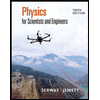 Physics for Scientists and EngineersPhysicsISBN:9781337553278Author:Raymond A. Serway, John W. JewettPublisher:Cengage Learning
Physics for Scientists and EngineersPhysicsISBN:9781337553278Author:Raymond A. Serway, John W. JewettPublisher:Cengage Learning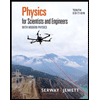 Physics for Scientists and Engineers with Modern ...PhysicsISBN:9781337553292Author:Raymond A. Serway, John W. JewettPublisher:Cengage Learning
Physics for Scientists and Engineers with Modern ...PhysicsISBN:9781337553292Author:Raymond A. Serway, John W. JewettPublisher:Cengage Learning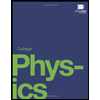 College PhysicsPhysicsISBN:9781938168000Author:Paul Peter Urone, Roger HinrichsPublisher:OpenStax College
College PhysicsPhysicsISBN:9781938168000Author:Paul Peter Urone, Roger HinrichsPublisher:OpenStax College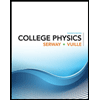 College PhysicsPhysicsISBN:9781305952300Author:Raymond A. Serway, Chris VuillePublisher:Cengage Learning
College PhysicsPhysicsISBN:9781305952300Author:Raymond A. Serway, Chris VuillePublisher:Cengage Learning





